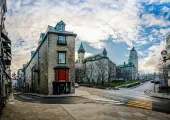12 Historical Sites That Worth Visiting in Seoul
Catalogue
- Deoksugung Palace
- Insadong
- Changgyeonggung Palace
- Changdeokgung Palace
- Dongdaemun
- Gwanghwamun Gate
- Dongmyo (Eastern Shrine)
- Namsangol Hanok Village
- Sungnyemun Gate
- Gyeongbokgung Palace
- Cheong Wa Dae
- Bukchon Hanok Village
Show More
South Korea is an East Asian state that forms the southern part of the Korean Peninsula and shares a land border with North Korea. Seoul is operating from 43 cities with populations of over a million people within three hours. The location of Korea between China and Japan was a significant geographical advantage for the country. People of Seoul enjoy shopping in trendy boutiques and drinking in cool cafes and welcoming bars. The people of Seoul are friendly and stylish. The Korean language is the main language of Seoul. The best time to visit Seoul is from March-May, and September–November. Take a look down on this sprawling metropolis of about 10 million people from the top of any of the four guardian mountains in Seoul, and you'll feel the strong pungsu-Jiri (Feng Shui) that has long nurtured and preserved the city. Whatever you want, Seoul can do at any time of day or night. A visit to the temple early in the morning can lead to a tour of the palace followed by tea-sipping in Bukchon and gallery hopping in Samcheong-dong. Achieve this in a jjimjilbang (sauna and spa) with steaming, cooling, and snoozing are a few essential things to do in Seoul. Splitting South from North Korea, the formidable Demilitarized Zone (DMZ) exerts a strong appeal and makes a compelling day trip.
Deoksugung Palace is a fabulous Korean palace in having a modern seal engraving and a garden and fountain in western style. In Deoksugung Palace, medieval and modern style architecture resides in harmony. You will find the Royal Guards outside this palace conducting their turn over ceremonies, and a visit to this palace is the essential things to do in Seoul. The Deoksugung Palace was the home of Prince Wolsan, King Seongjong's older brother. The residence had not yet been known as a palace at that time. The area consisted of residential buildings for royal family descendants. In 1592, During the Japanese occupation of Korea, the residential buildings became a provisional royal residence after fires had destroyed all the other palaces. It became the palace's main entrance after the Wongudan Altar (Hwangudan Altar) was completed. Inhwamun has initially been the main gate. It was shifted to the west in 1970 due to Taepyeong-no Street's nearby development.
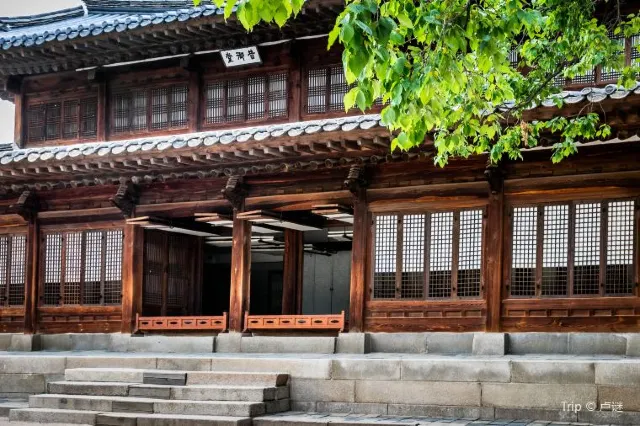
Insadong is the most famous neighborhood in the heart of Seoul, often visited by locals and tourists to experience Korea's traditional culture. Streets and narrow back streets are lined with art galleries, wooden tea houses, pubs, cafes, and independent arts and crafts shops. Insadong-Gil, the main road stretches from Tapgol Park in the south to Anguk-dong Rotary for 700 meters. During the Joseon Dynasty (1392–1897), many of the buildings in the area were once owned by traders, administrators, and government officials. Insadong is one of the best things to do in Seoul to find tea, calligraphy, folk crafts, antique furniture, hanbok (traditional clothes) and hanji (regular paper). Many Korean ceramics are bought and sold here every day, some dating back thousands of years visit Insadong, especially when the weather is good, and this place is quite busy during this time. Walking along Insadong's streets with thousands of others, shopping in the many small shops and vibrant stores, and trying out street food is a great thing to do in Seoul.
Changgyeonggung Palace was used as a royal residence and as a secondary palace for queens and the King's son. Changgyeonggung Palace lies in the heart of Seoul. In 1104, during the reign of King Sukjong of the Goryeo Dynasty, a summer palace known as Sunganggung was first constructed there. In 1392, at the start of the Joseon Dynasty, Korea's capital was relocated from Kaesong, now North Korea, to Seoul, then known as Hanyang. King Sejong built a new royal residence at this site in 1418 for his father, King Taejong. King Seongjong expanded the palace buildings for King Sejo's widows in the year 1483 and 1484. At that time, the royal residence was called Changgyeonggung Palace. Changgyeonggung was known as Changgyeonggungwon (Changgyeong Garden) during the Japanese occupation of Korea from the year 1910-1945. It was converted from a luxurious royal palace into a hotel with a zoo and botanical garden. Changgyeonggung Palace, together with Changdeokgung Palace, is known as Donggwol, or the East Palace is a must thing to do in Seoul.

Changdeokgung Palace is located to the east of Gyeongbokgung Palace, and it is also known as Donggwol, the Eastern Palace. The castle has been home to the government of Joseon for 270 years and was also the favorite residence of many kings of the Joseon Dynasty. The Changdeokgung Palace is the royal residential palace with the most extended service. Changdeokgung Palace is well-preserved relative to other castles and still has many of its original features. The way the buildings blend into the surrounding landscape is a specific quality of Changdeokgung Palace. The back garden of the palace, Huwon, is considered an exceptional example of a Korean garden layout and is the only rear garden of any Korean palace. Changdeokgung Palace was renowned as the World Heritage List of UNESCO in the year 1997, and it’s a must-visit place and things to do in Seoul. Huwon is self-contained and occupies 60% of Changdeokgung. The buildings of the palace are situated on the hill of Bugaksan (Mt.) and have very few artificial features to blend with their natural environment. A large lake, Buyongji, together with Buyongjeong (Pavilion) and Juhapru (Pavilion), is situated in the center of Huwon. A cross-shaped roof and two supporting pillars from the pond make Buyongjeong's design unique. King Jeongjo (the Joseon Dynasty's twenty-second king) and his courtiers are said to have sometimes enjoyed fishing here in Buyongjeong.

Dongdaemun is a top destination in which international visitors are always around. Tourists visiting this area can even spend a whole day exploring it. Some of the most representative attractions and things to do in Seoul are found in this region include the first treasure named by the state, the Heunginjimun Gate, the all-time favorite Cheonggyecheon River, as well as the prominent landmark of this district, the Dongdaemun Design Plaza (DDP). The Dongdaemun area is more significant than most visitors know, so it also leaves many secret attractions unexplored. For the first time, travelers to have a productive time in the Dongdaemun area, read on for our very own one-day guide. Although Dongdaemun Market is historically famous for its night market, this popular shopping district also attracts many shoppers and tourists. Unlike Namdaemun Market, Dongdaemun Market sells a variety of items, but unlike Namdaemun Market, it is open 24 hours a day. Dongdaemun Market is a large traditional market and shopping centers covering the entire Dongdaemun Gate area, a prominent landmark in Korea, and Shopping is the essential things to do in Seoul. It is the largest retail and wholesale shopping district in Korea with 26 shopping malls, 30,000 specialty stores, and 50,000 manufacturers. Silks and fabrics, clothing, shoes and accessories, electronics, leather goods, athletic goods, office supplies, pet items, and toys are available here.
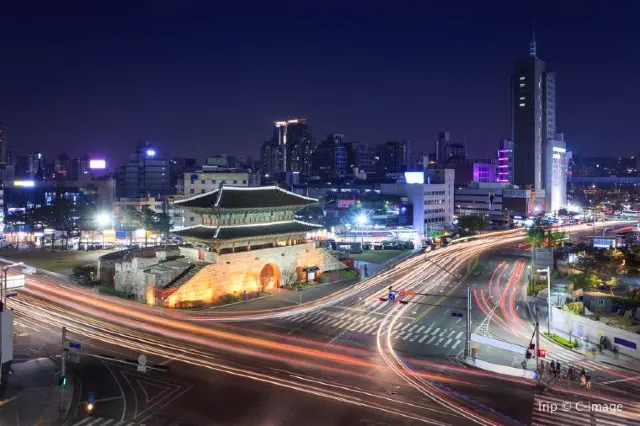
Gwanghwamun Gate is the Gyeongbokgung Palace's formidable main gate. Over the years, the entrance has been redesigned several times but remains an emblem of Seoul. Construction started at the beginning of the Joseon dynasty in the year 1395. The gate soon became one of the Joseon Dynasty's most essential barriers as it protected the main palace. Three other gates are located along the walls surrounding the castle at 2,404 meters (7,887 feet). Sinmumun, Geonchunmun, and Yeongchumun are the other three gates. The gate is made up of three entrances and a tall pavilion of two stories. Several watchtowers once guarded Gwanghwamun. Upon their occupation of Korea during the Imjin War in 1592, the gate was demolished by the Japanese. In 1867, almost 250 years later, during the reconstruction of nearby Gyeongbokgung Palace, the gate was restored. During the Korean War, the wooden gatehouse of Gwanghwamun Gate was again demolished. Work started to restore Gwanghwamun to its original wooden specifications in December 2006. Historical details were given special attention to the restoration work. Restoration work got completed on August 15, 2010, at the cost of winning 28 billion.
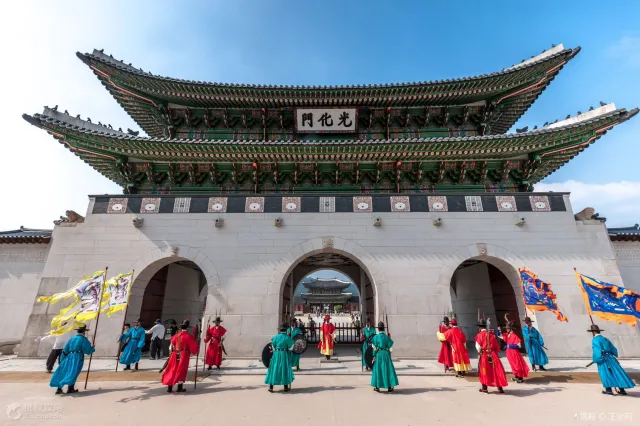
Dongmyo Shrine is a shrine where Chinese military leader Guan Yu's ancestral was sacrificed. It is also known as Seoul Donggwanwangmyo, meaning Gwanwangmyo in the east of Seoul. Guan Building on the shrine began in the year 1601 during King Seonjo's 34th year of reign. Dongmyo consists of two main buildings at the front and rear of each other. The roof shape was based on the gong of the Chinese letter, and the buildings were divided into two parts. The front section is known as jeonsil and this, front room used for rites of sacrifice. The rear part is known as bonsil, and this is the main room that houses a statue of Guan Yu and other generals. Outside, these buildings have large brick walls and pillars on the roofs. Three other identical shrines are built in Seoul in the north, south, and west. In the east, Donggwanwangmyo is the highest and brightest. The architecture of the Chinese style is the best thing to do in Seoul as its construction, attractive roofs, statues, brick walls, and decorations are unique.
Namsangol Hanok Village is a group of five Joseon Dynasty (1392-1910) hanoks (traditional Korean houses), recovered from different parts of the city and relocated to the northern foot of Namsan Mountain. The interior of each of these five houses represents owners from different walks of life, from the middle class to high-ranking government officials, nobles and aristocrats. At Namsangol Hanok Village, tourists can see the hanok of significant Joseon-era figures including the house of Queen Yun's mother, who was the Queen Consort to King Sunjong, the 27th King of the Joseon Dynasty; Yun Taekyeong's jaesil, King Sunjong's father-in-law; Min Yeong-hui's residence, Empress Myeongseong's relative; the house of Lee Seungeop, who was responsible for the building of the Gyeongbokgung Palace and the home of Kim Chunyeong, a Joseon Dynasty military officer. In the village of Hanok, take part in traditional Korean sports such as archery, enjoying regular Korean performances are the things to do in Seoul. When traditional wedding ceremonies take place, visit the village on the weekend to see the Korean wedding culture.
Sungnyemun Gate (Namdaemun) is one of the famous Four Great Gates of Seoul and was named by the Korean government as National Treasure Number one in the year 1962. Although its official name is Sungnyemun, because of its location at what was once the southern end of Seoul, it is also popularly known as Namdaemun Gate. Seoul grew in size as the centuries passed, but Sungnyemun Gate has survived through the years. Construction began in 1395 on the gate and ended in the year 1398. Reconstruction work was carried out by Sungnyemun in the year 1447. The portal is the city's most giant gate, with an arched entrance, and a two-story wooden structure stands on top of the gate's wooden base. The gate is the oldest wooden structure in Seoul, but much of the wooden structure of the gate was destroyed by fire on February 10, 2008. Sungnyemun Gate can now be entertained in all its glory after several years of therapeutic service.
The Palace of Gyeongbokgung was the first and largest royal palace built during the Joseon Dynasty. Completed in the year 1395, Gyeongbokgung Palace was located in the heart of Seoul's newly established capital (then known as Hanyang) and represented the Joseon Dynasty's sovereignty. Gyeongbokgung, the largest of the Five Grand Palaces (the others being Gyeonghuigung Palace, Deoksugung Palace, Changgyeonggung Palace, Changdeokgung Palace), served as the Joseon Dynasty's main palace. The government of Korea has spent a great deal of time and effort to repair, preserve, and retain the castle for future generations. Such projects include work on improving and restoring the structures that were lost during the invasion of Japan. Tourists can visit Korea's National Palace Museum and Korea's National Folk Museum; must-visit things to do in Seoul as they are on the Gyeongbokgung palace grounds. In December 2018, the western gate of the palace, Yeongchumun, was opened to the public to enhance connectivity from Gyeongbokgung Palace to Seochon and vice versa. There have been only three entrances to Gyeongbokgung Palace for the past 43 years-Gwanghwamun's southern gate, Sinmumun's northern gate, and Korea's National Folk Museum's eastern entrance.
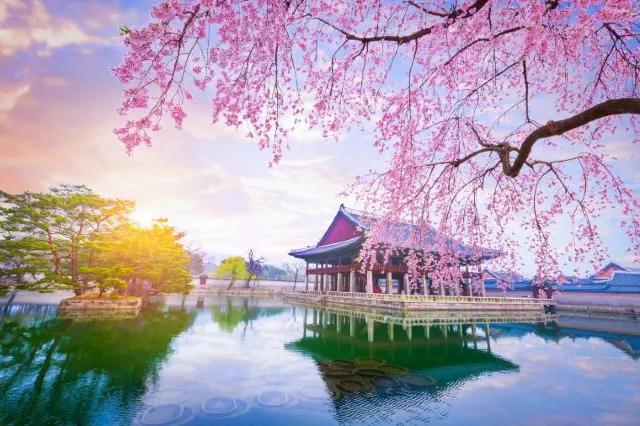
Cheong Wa Dae is the Korean presidential residence, also known as the Blue House. Visitors can visit Cheong Wa Dae through an official tour in central Seoul. Cheongwadae's main building is located in the presidential office, reception hall, and conference room. On the grounds of the residence, lakes and gardens are touching Bugaksan Mountain's foot. Reservations of the tour must be made in advance as tickets can be made up to 6 months in advance and not less than 20 days before the scheduled tour date. Cheongwadae Sarangchae is located in front of the Cheongwadae entrance. It is a museum and the best things to do in Seoul, where visitors can see Seoul and Korea's history, present, and future dreams. Two tall stories of tales are Cheongwadae Sarangchae. There are cultural and tourism-related exhibits on the first floor and exhibitions on Korea and Seoul on the second floor.

Bukchon Hanok Village is a historic village featuring hanok or traditional Korean dwellings from the Joseon Dynasty, which dates back nearly 600 years. Bukchon means "northern village." The quaint residential town is located in a hilly area north of Cheonggyecheon Stream and between two royal palaces, Gyeongbokgung Palace and Changdeokgung Palace. A hanok is a traditional wooden house found throughout Korea at one time. The new concrete structures have replaced the old-style buildings. During the Joseon Dynasty, royal families, aristocrats, wealthy citizens, and government officials lived in many of the village's hanok residences. While many other areas in Seoul are filled with high elevations and new buildings, the Bukchon Hanok Village has remained remarkably intact with mostly low elevation buildings. There are around 900 hanok buildings in the city, many of which have been restored to their former glory using traditional designs and materials. Today, Bukchon Hanok Village is a beautiful array of restaurants, tea houses, cultural centers, and more.
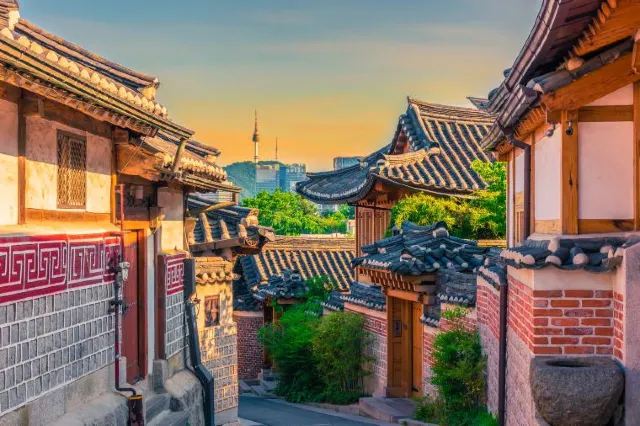
Seoul is one of the best exciting megacities in Asia and a major travel destination in the coming years. Head to Seoul, and you’ll find a mix of traditional and modern, with innumerable attractions and sites to explore for any taste!
Trending Travelogues
Popular Trip Moments
Popular Travel Types
Popular Attractions
Popular Destinations
Recommended Attractions at Popular Destinations







Site Operator: Trip.com Travel Singapore Pte. Ltd.
